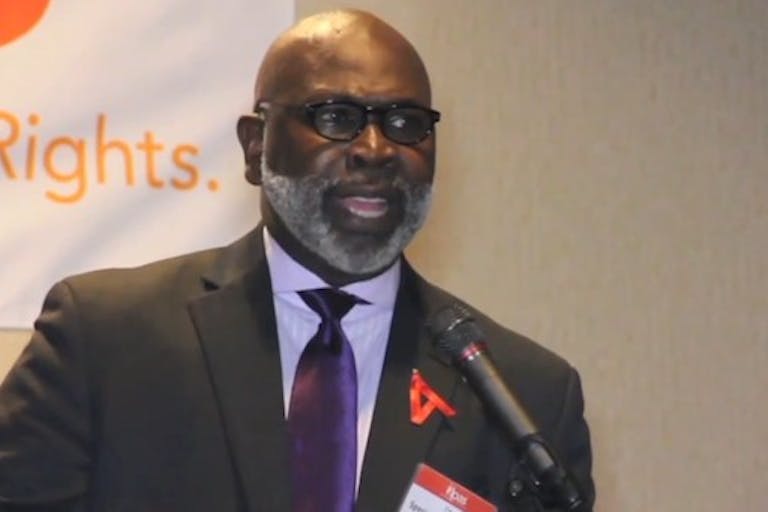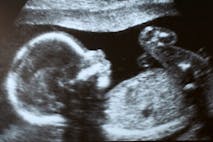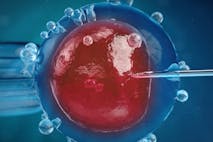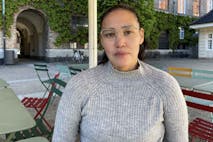
Faroe Islands parliament legalizes abortion up to 12 weeks
Angeline Tan
·
Abortionist describes seeing fetal body parts, dismisses them as only ‘organic matter’
In a passage in his pro-abortion book Life’s Work: From the Trenches, a Moral Argument for Choice, abortionist Willie Parker describes seeing the body parts of the babies he aborts, including “head, body, limbs.” He describes piecing the dead, dismembered babies together “like a puzzle.”
Parker is a well-known abortionist who has been hailed in the media as a hero who stands up to anti-abortion protestors and compassionately serves women. One article calls him “the Bravest Christian Abortion Provider in the US.” While claiming to be a devout Christian, Parker commits abortions up to 25 weeks, past the time when some preborn babies can live outside their mother’s wombs. In fact, a baby born at 25 weeks has a 50 percent chance of surviving.
A previous Live Action article about Parker quotes him admitting to sending a teenage incest victim back to her abuser. Even though the victim was still a teen, Parker did not report the abuse. He justified his inaction by making defamatory statements about her race and religion.
In Life’s Work, Parker describes what happens in a first trimester abortion. After dilating the woman’s cervix (the neck of the womb) with metal instruments, Parker says:
Article continues below
Dear Reader,
Have you ever wanted to share the miracle of human development with little ones? Live Action is proud to present the "Baby Olivia" board book, which presents the content of Live Action's "Baby Olivia" fetal development video in a fun, new format. It's perfect for helping little minds understand the complex and beautiful process of human development in the womb.
Receive our brand new Baby Olivia board book when you give a one-time gift of $30 or more (or begin a new monthly gift of $15 or more).
Then I insert a straw, called a cannula… and attach that to a suction tube which leads to a canister by my feet. I flip a switch on the canister body, which turns on the vacuum, and, with a circular motion, I sweep the walls of the uterus with the tube. Within the space of a couple of minutes, the products of conception are sucked through the tube and into the canister.
Although Parker uses the euphemism “products of conception” he soon reveals the reality of what has been aborted:
I place the small mass of tissue and blood into a fine mesh strainer that looks like something you’d find in an industrial kitchen, and I run the whole thing for a minute under running water. Then I transfer the contents of the strainer into a square Plexiglas dish, which I place on top of a lightbox. And there, I inspect what has just come out of the woman’s body: what I’m looking for is the fetal sac, which, at a later gestational age, becomes the placenta, and, after nine weeks, every one of the fetal parts – head, body, limbs – like a puzzle that has to be put back together… I make sure I find every part, and I place them together, re-creating the fetus in the pan. I have done this so many times that it is has become routine: no matter what these parts may look like, this is organic matter that does not add up to anything that can live on its own. This phase of the process is crucial as any other.
He goes on to say that any part of the baby (like an arm or a leg) left behind in the woman’s body “can lead to hemorrhage, infection, or both.”
Even though Parker sees pieces of aborted babies daily, he refuses to acknowledge their humanity. Instead, he calls them “organic matter” and “products of conception.” In reality, they are fully formed preborn human beings. Claiming to be a devout Christian, Parker holds himself up as champion of women — never considering the tiny preborn babies he mutilates every day.
Source: Willie Parker Life’s Work: from the Trenches, a Moral Argument for Choice (New York: 37INK, Atria, 2017) 95 – 96
Live Action News is pro-life news and commentary from a pro-life perspective.
Contact editor@liveaction.org for questions, corrections, or if you are seeking permission to reprint any Live Action News content.
Guest Articles: To submit a guest article to Live Action News, email editor@liveaction.org with an attached Word document of 800-1000 words. Please also attach any photos relevant to your submission if applicable. If your submission is accepted for publication, you will be notified within three weeks. Guest articles are not compensated (see our Open License Agreement). Thank you for your interest in Live Action News!

Angeline Tan
·
Politics
Madison Evans
·
Opinion
Nancy Flanders
·
Investigative
Carole Novielli
·
International
Cassy Cooke
·
Analysis
Nancy Flanders
·
Guest Column
Sarah Terzo
·
Abortion Pill
Sarah Terzo
·
Guest Column
Sarah Terzo
·
Guest Column
Sarah Terzo
·
Guest Column
Sarah Terzo
·